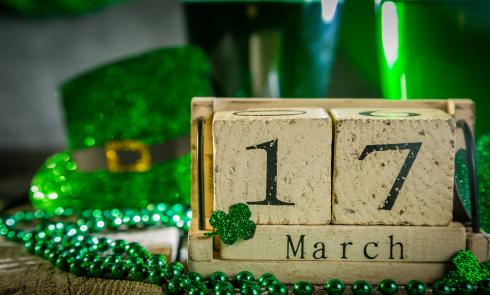- 289.813.1969
- 1.844.564.1076
- info@furtherafieldtravel.ca
You are here
Saint Patricks Day

The 17th March is the feast day of St. Patrick, the Patron saint of Ireland. It’s celebrated all over the world wherever an Irish person has ever set foot. Some would have had no choice in the destination they ended up in.
In the 1600 and 1700s deportation out of Ireland during the white slave trade had males and females sent to Barbados, Montserrat which is known as the ‘Emerald Isle of the Caribbean’, Jamaica, the British West Indies, and the Leeward Islands. With British occupation in Ireland, deportation for lawlessness was also an answer to populating these islands that were under British occupation. Celebrating St. Patrick’s Day in such places is a wonderful festival of colour and pageantry. The remarkable thing is that only 2% of the population have ever seen Ireland. Saint Patrick himself would feel right at home in any of these areas, “sure didn’t I start off as a slave ‘me self’ back in Ireland, sure of course you knew that, didn’t you”.
Australia was another penal colony during the early 1800s. Some of those felons were indentured slaves, these were immigrants that bartered their trip with a guarantee to work for a certain length of time. Others were criminals who had to spend years of hard labour working there.
Once upon a time it was a disgrace to be considered a relation of a deportee, that had ended up in Australia, nowadays there are those that consider it as a badge of honour. Songs of the ‘Wild Colonial Boy’ and films like ‘Ned Kelly’ are sung to rapturous applause. Watch the all day long celebrations.
The largest parade is in Dublin City with a four-day festival for the occasion. Parades in every city, town, and village, marching bands, from all over Europe, North America and Canada, all dressed up in the finest of green. There are sporting events to go to i.e rugby, football, hurling, horse racing, and athletics.
The Roman Empire had arrived in what we now call England and Wales in the first century. They were repelled from the northern part (Scotland) by the Pagan Picts. The Romans never got to Ireland. One or two must have been there because they referred to the place as Hibernia, the Land of eternal Winter.
The Irish pagans were notorious for raiding Wales and England, plundering what goods they found and carrying off slaves. In the fifth century a raid that happened was to change the history of Ireland and indeed Europe for ever. A boy of about sixteen was on board one of the vessels. His name was Patrick. With the Romans being in England for over 400 years Christianity had indeed an impression on some of the people. Patrick’s mother Conchessa, was a Christian and could read and write. Patrick had learned from her, in his writings in later life he did confess that he wished that he had learned more.
During the years that Patrick had been in slavery in Ireland a metamorphic change had occurred in England. A barbarian force from Northern Europe had attacked the Holy Roman Empire leaving their troops scattered and vulnerable. The Legions were called back to Rome from England. As a result England was virtually destroyed, gone were villas, towns were laid bare and went into decline. Hadrians Wall that had been built by the Romans to prevent the attacks by the Picts was now left unattended.
Patrick returned to England and was educated by his family and trained for the priesthood. He then returned to Ireland and started to preach Christianity to a Pagan people. He was openly accepted by Loegaire, the King of Tara after Patrick forced the Royal Druid to be subdued by him. On baptizing the King, Patrick went overboard with the ceremony, closing his eyes he lifted his crozier and with reasonable force and grace he drove the crozier through the King’s foot. After, Patrick not missing a beat when he realized the tragedy, invited the King to join him in the river, limping forward and completely naked, the King was reverently and truly baptized. However the crowd that had gathered to be part of this celebration of conversion, soon started to dwindle on witnessing the King’s gruesome subjugation to Christianity. If this was part of the ritual it certainly wasn’t for them. The King not only encouraged Patrick to continue his preaching and conversions but sent a group of young able-bodied men to protect him on his travels.
What was the attraction of the Christianity? Education, learning to read and write meant that now contracts could be drawn up, if it’s in writing then it’s binding.
Over the centuries monasteries were established throughout Ireland. Each one had a scriptorium where scribes copied and wrote manuscripts. St Columba or Colmcille is credited with spreading Christianity to the Island of Iona in Scotland, and then onto what is now mainland Britain. The city of St Andrews became the ecclesiastical capital of Scotland. From there the Church’s teachings spread to France, Spain, Hungary, Serbia, Italy and much of Eastern Europe.
For Saint Patrick’s Day join in the celebrations, wherever you may be, with music, songs, dancing, storytelling and parades. Let the woes of the world, the financial strains or worries of living, the turmoil and uncertainty of tomorrow be eliminated from our minds for this day.
“Yesterday is history,
Tomorrow is a mystery,
But today is a gift.
That’s why it’s called the present”.
Happy Saint Patrick’s Day to you all.